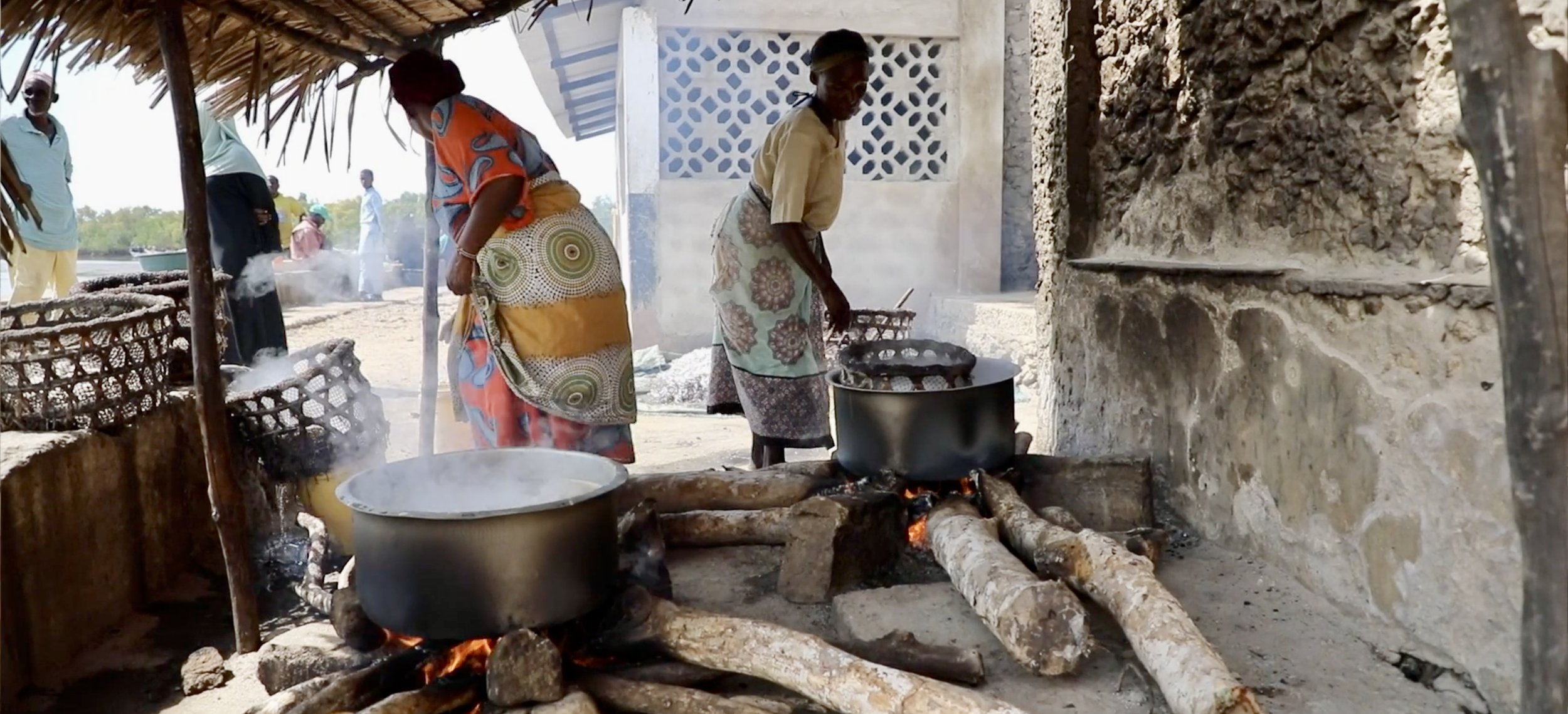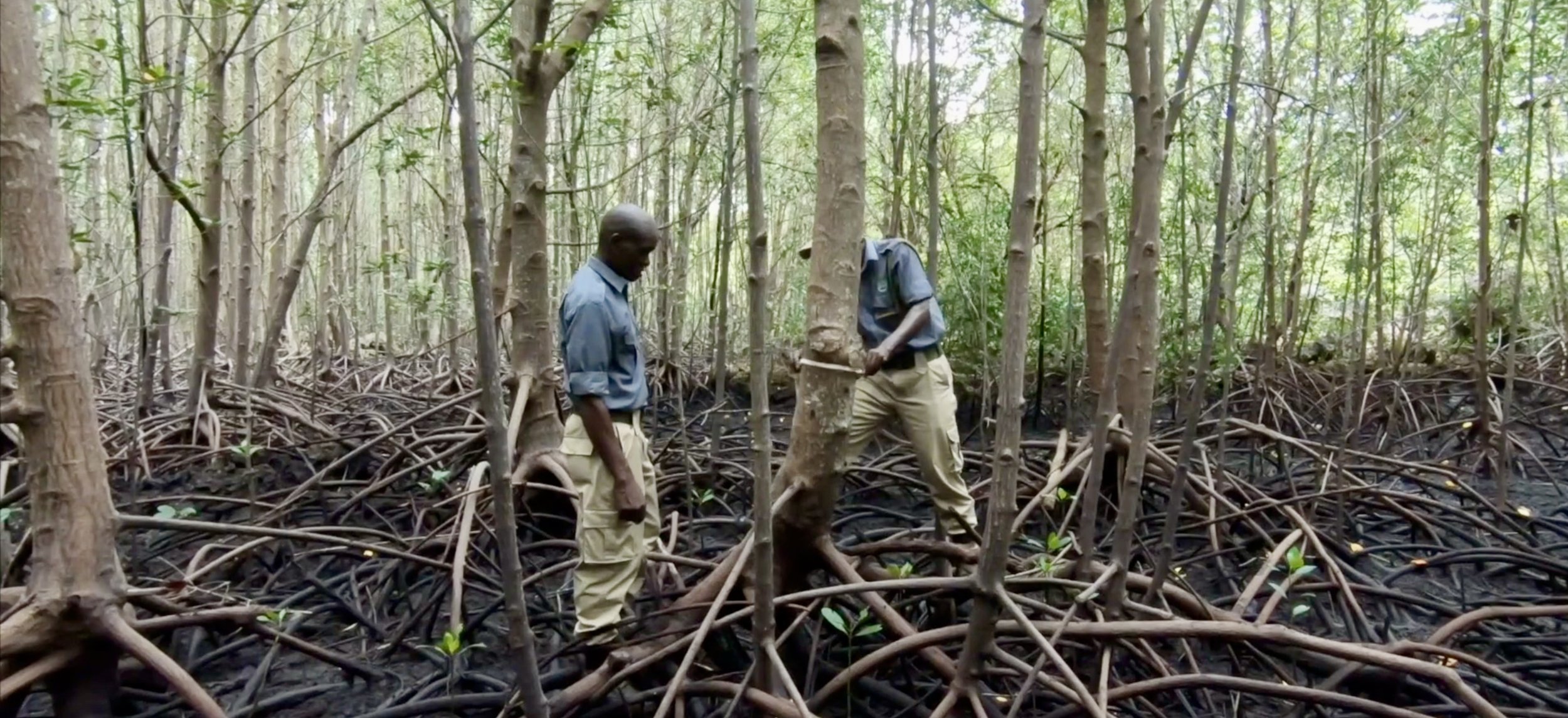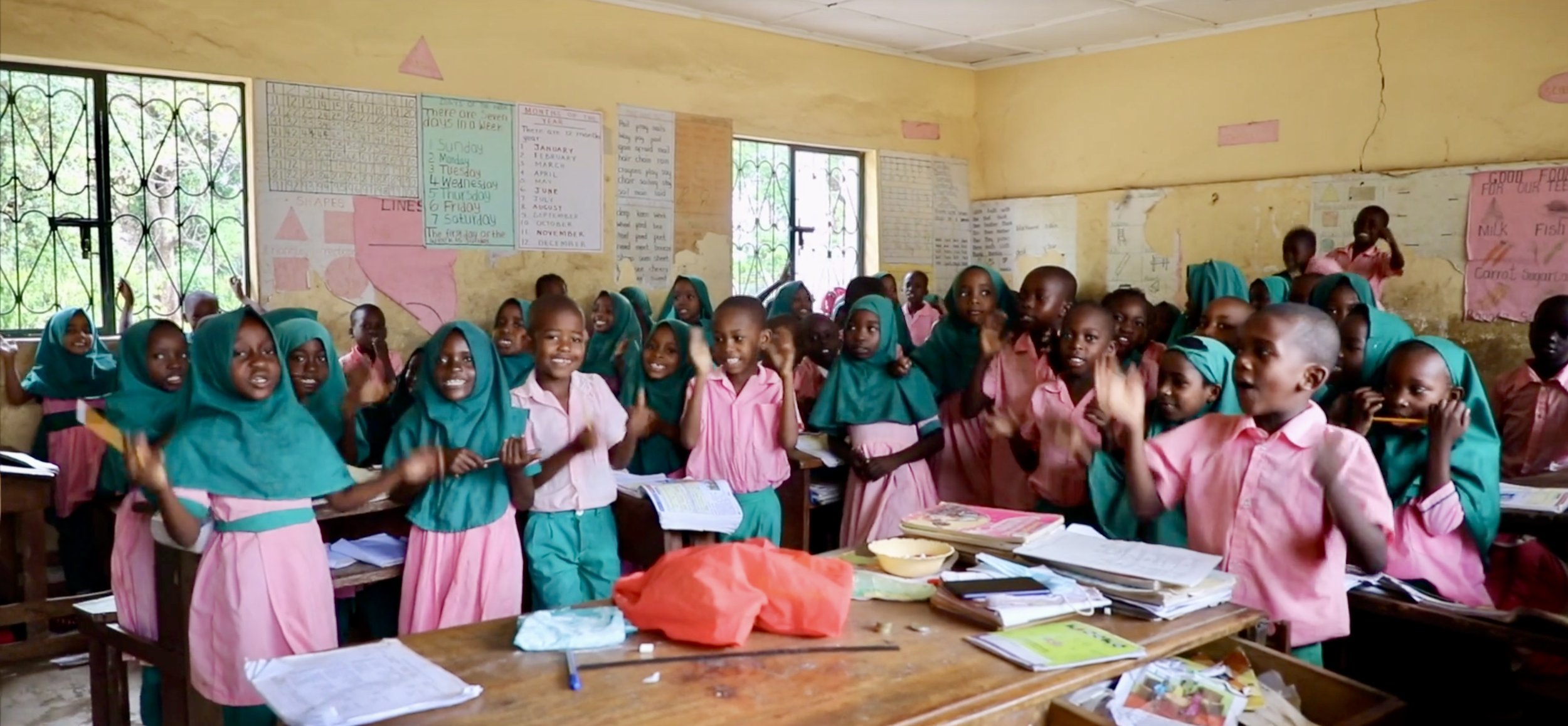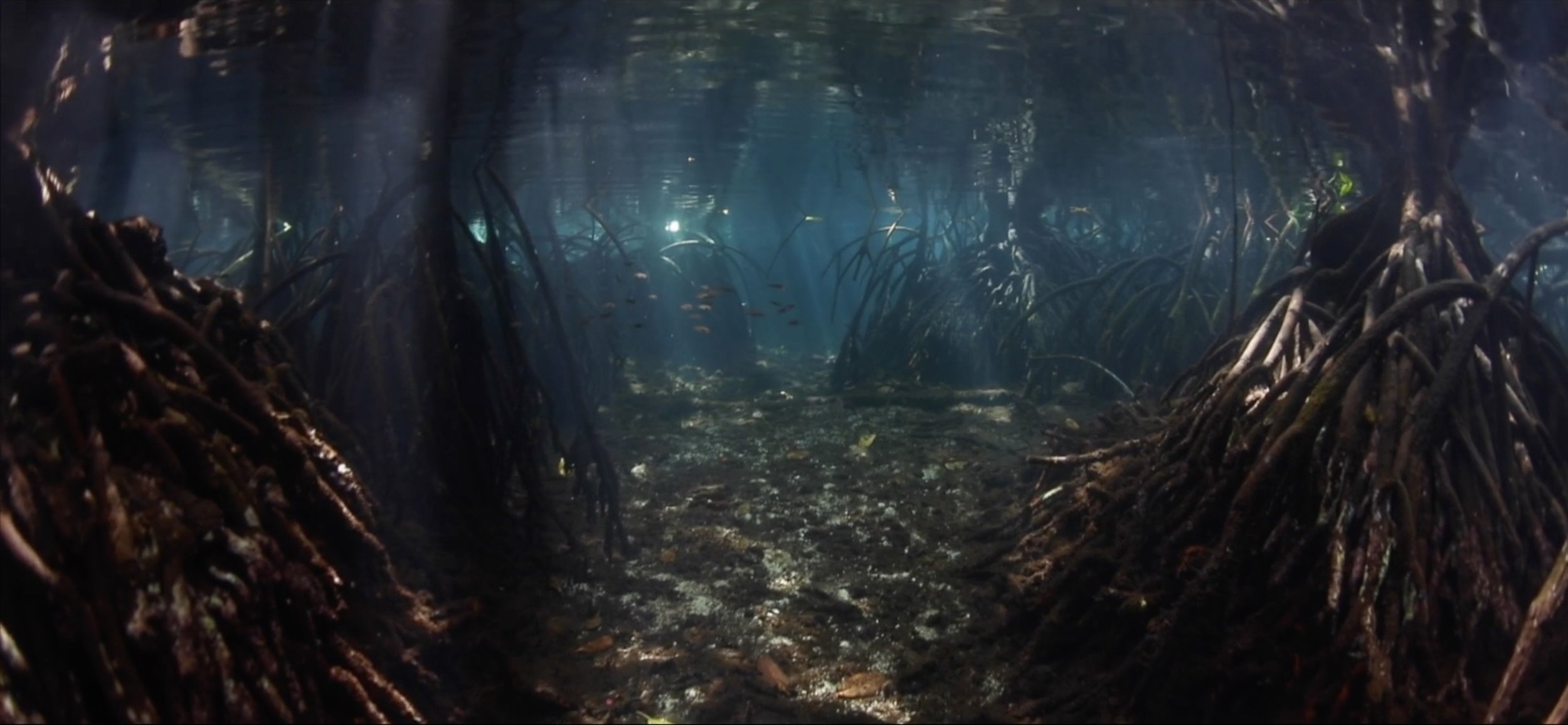Blue Forest
Mikoko Pamoja, based in Gazi Bay in Southern Kenya, is the world’s first community mangrove conservation project to be funded through the sale of carbon credits. It’s sister project, Vanga Blue Forest, is located further south along the coast. Together their pioneering approach is being replicated in projects around the world.
Rahma Kivugo and and Mwanarusi Africa are the project co-ordinators on the ground for these projects. Through their work they are not only helping in the fight against climate change but, as young women conservationists, are also breaking down age old barriers and stereotypes. We talked to them about the projects and the challenges they face in their work…
A multimedia story by Rupert Bedford
Published on 20th October 2023.
The mangroves of Gazi Bay, Southern Kenya.
Rahma Kivugo, Project Co-ordinator for Mikoko Pamoja;
“Mangroves are a very beautiful and special ecosystem, they are able to survive where terrestrial plants would not be able to survive. They have a higher capacity to absorb CO2 from the atmosphere - about 6-10 times more compared to terrestrial forests. And their roots buffer the coastline by reducing the strength of the waves coming in from the Ocean. So they have this ability to mitigate the effects of climate change.
Mikoko Pamoja is the first Blue Carbon project in the world to engage local communities in the conservation of mangroves where they get to benefit from the sale of Mangrove carbon credits. It has benefits to biodiversity conservation as well as climate change mitigation and very much contributing to the social economic development of the local communities within Gazi Bay that we’re working with.”
Mangroves absorb more Co2 than terrestrial plants…
…their roots buffer the coastline.
Gazi village, Southern Kenya.
Mwanarusi Africa, Project Co-ordinator for Vanga Blue Forest;
“Vanga Blue Forest is an extension of Mikoko Pamoja, it’s much larger - almost three to four times the size. It’s a project that aims to restore the degraded mangroves Vanga, based on the Southern Coast of Kenya through community participation. Our first thing is educating the community. The people know about the direct benefit from the mangroves such as firewood, wood for construction and local herbal medicines, but when you tell somebody about the essence of mangrove forests in terms of storing carbon, in terms of it as a mitigator to climate change, people tend to really understand that then they tend to appreciate the nature itself.”
Vanga is a small fishing village in Southern Kenya, close to the border with Tanzania.
Mangroves provide firewood...
…wood for construction…
…and local herbal medicines.
Rahama…
“So what we do as a project is to create more awareness about the importance of this ecosystem and the value that it can bring to not just a local communities, but the entire globe as one community. And one of the measures that we are currently working on is on the establishment of terrestrial woodlots that would help reduce the exploitation pressure on the mangrove ecosystem by providing an alternative source of firewood and timber for construction. We also carry out forest monitoring, seeing through the status of the forest in terms of its growth and its structure and seeing through the calculation of the carbon source and re-planting of the mangrove seedlings in various areas.”
Local rangers monitor the forest…
…and check the progress of new plantations.
As part of the projects, some areas are replanted with mangrove seedlings.
Mwanarusi…
“Carbon sales are an important source of funding for the community. Through the project, we are able to reduce emissions of about 5000 tons of carbon per year. So, through the sale of carbon credits, the funds are used in terms of establishing community projects and running the daily activities of the project whether it's monitoring whether it's establishing woodlots and other activities that we run as a project.
Income from carbon sales funds various local community projects.
Mangroves, have a great ecological value to the marine ecosystem. The presence of the mangroves within the shoreline tends to filter out the sediments and by doing, so, they protect the biodiversity downstream such as the sea grasses and also the coral reefs.”
The ecosystems of mangrove, sea grass and coral reef are closely connected.
Rahma…
“So, in terms of biodiversity, mangroves serve as a breeding ground for the fish as well as a nursery ground for young fish and protective ground for the fish against other predators. So you find most breeding happens within the mangroves where they later transfer to other adjacent ecosystems such as the seagrass systems, and later the coral reefs. So it shows the connectivity between all these marine ecosystems.
Empowering women and girls is an important part of the projects.
Coming in as a young women was not that easy at the beginning. There was a lot of resistance. Mikoko Pamoja recognises that women should be given a position in society to be able to give out the voice and have a listen to. But having to get the women talk in the meetings was actually a very big challenge in the beginning but we were able to overcome that. So we've come along way, and I'm glad to have been part of that process. I'm glad that I never got to give up and I'm also hoping that my resilience in my job serves as an example to the young girls within the village and outside there. I hope that it shows that you can actually do something and in many ways, people will try to help you out, solve your problems but it's all up to you. It's all up to you to show people that you can do it. You can make a change in a society for them to accept you for who you are.”
Mwanarusi…
“I feel like I am a bridge, tackling out the crisis of climate change. I come from the coastal community here in Kenya. So I feel that sense of attachment when we are talking about coastal resources such as the mangroves. When people talk about mangroves being a problem solver, something as big as climate change, that makes me wake up every day, come to work and see what steps I can take towards mitigating this crisis of climate change.”
Mikoko Pamoja has been awarded the prestigious Equator Initiative prize for community solutions to climate change.
Along with Vanga Blue Forest, it involves a collaboration of local, national and international partners.
The projects are managed by their co-founder, Association for Ecosystem Services (ACES), based out of Edinburgh Napier University in Scotland.
Rahma and Mwanarusi work for pioneering mangrove conservation projects Mikoko Pamoja and Vanga Blue Forest in Southern Kenya. In this clip they talk about the challenges they face in their work as young women conservationists in their coastal communities in Kenya.
© RB Media.
If you are interested in re-publishing or linking to this story please contact Rupert at rupert.bedford@rbmedia.org























